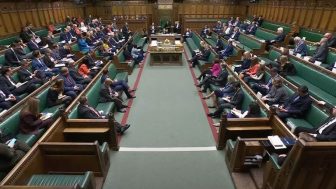Latest News
- Details
- Hits: 203
Capital Gains Tax applied to profits made on main residences – a possible Budget measure next month – would make the vast majority of home owners less likely to put their properties on the market.
That’s the conclusion of a poll of 1,000 owners conducted for financial brokerage Boon Brokers.
Under the current UK tax system, main residences are exempt from Capital Gains Tax, which is instead only payable on profits from the sale of second homes, investment properties, shares, and other assets.
However, speculation ahead of the November 26 Budget suggests that the Treasury is considering CGT reform, with some analysts mooting the tax could even be applied to profits made from the sale of primary residences – although no details on thresholds, tax rates, and exemptions have been publicised.
In response to questions in the Boon Brokers study, 71% of respondents stated that the reforms would make them less likely to sell their main residence, indicating that, if implemented, a significant proportion of homeowners may choose to postpone selling in order to avoid additional taxation.
Details of the findings show that a reluctance to sell would be consistent across all age groups.
Among respondents aged 18-24, 76% said they would be less likely to sell their main residence if CGT were applied, compared with 63% of those aged 25-44, 68% of those aged 45-54, and more than 80% of respondents aged 55 and over.
Gerard Boon, managing director, comments: “Introducing Capital Gains Tax on main residences could have serious consequences for the housing market. When fewer homeowners are willing to sell, supply will naturally constrict, driving up competition and prices. This imbalance between supply and demand doesn’t just impact affordability, it would risk stagnating the market and placing greater pressure across all levels of the housing market.”
A further finding of the research was that, in response to the question “Do you believe it is fair for the government to apply Capital Gains Tax to main residences that were previously exempt?”, some 73% of respondents stated that applying CGT to main residences would be unfair. And 97% of respondents disagreed that applying CGT to primary homes is the fairest way to balance public spending, revealing a strong opposition across all demographics.
The commissioned survey also explored public opinion on how the proposed CGT changes might influence support for the current government. Respondents were asked: “How do you think this tax change will impact Labour’s chances of re-election in the next general election?”
The results found that the proposed CGT reform could also carry political repercussions, with 78% of respondents believing it would reduce Labour’s chances of re-election. Of these, 45% stated it would significantly reduce Labour’s chances, while 33% said it would slightly reduce the party’s chances at the next general election.
- Details
- Hits: 369
The government has just announced late-stage amendments to its flagship Planning and Infrastructure Bill, aimed at increasing housing delivery and speeding up infrastructure projects.
If approved, the changes would give ministers new powers to prevent local councils from rejecting planning applications while the government considers whether to ‘call in’ decisions.
It is understood that prime minister Sir Kier Starmer ordered a ‘last-minute rewrite’ of the Planning and Infrastructure Bill, which was launched in March. The legislation seeks to help the government reach its target of 1.5 million new homes and, in doing so, raise an extra £3bn in tax revenue.
Currently at the report stage in the House of Lords, the bill’s passage into law was planned for November, a target which major changes may now risk delaying.
According to ministers, nearly 900 major housing developments were blocked by local authorities in the past year, contributing to delays in housing delivery.
The proposed amendments would also streamline the approval process for new reservoirs – the first in over 30 years – with the goal of boosting water supply and supporting future housing growth.
Other changes include provisions to support clean energy infrastructure such as onshore wind farms, which the government says could attract investment, limit energy bill increases, and create new jobs in local areas.
The government also plans to change the remit of Natural England, allowing the agency to prioritise advice on higher-impact planning applications and environmental recovery efforts. Officials argue this would help free up resources and accelerate decisions on housing and infrastructure.
Additional proposals include measures to prevent planning permissions from expiring while projects are tied up in legal proceedings. The aim is to reduce delays and avoid restarting planning processes on stalled developments.
The government maintains that these amendments will support its broader goals of building 1.5 million homes, achieving clean energy targets by 2030, and stimulating local economic growth.

Housing secretary Steve Reed said: “Britain’s potential has been shackled by governments unwilling to overhaul the stubborn planning system that has erected barriers to building at every turn. It is simply not true that nature has to lose for economic growth to succeed.
“Sluggish planning has real world consequences. Every new house blocked deprives a family of a home. Every infrastructure project that gets delayed blocks someone from a much-needed job. This will now end.
“The changes we are making today will strengthen the seismic shift already underway through our landmark Bill. We will ‘Build, baby, build’ with 1.5 million new homes and communities that working people desperately want and need.”
The government says key changes include:
+ Ministers will be able to issue ‘holding directions’ to stop councils refusing planning permission whilst they consider using their ‘call-in’ powers. Under existing rules, they can only issue these holds when council are set to approve applications. This will ensure ministers can properly use their call-in powers where necessary to boost growth and build more homes.
+ Speeding up the approvals for large reservoirs by enabling non-water sector companies to build reservoirs that are automatically considered as nationally significant infrastructure projects.
+ Unlocking more onshore windfarms, securing around 3GW of onshore wind and up to £2bn extra investment for UK-based businesses, whilst safeguarding UK defence and nuclear safety capabilities.
+ Stopping planning permissions from being timed out for approved major housing schemes facing lengthy judicial reviews, building on existing measures to cut back meritless legal challenges for major infrastructure projects from three to one and slashing a year off the statutory pre-consultation period.
+ Allowing the Nature Restoration Fund to support the delivery of marine development, securing better environmental outcomes for marine habitats whilst accelerating the construction of coastal projects.
+ Streamlining Natural England’s role will speed up approvals for new homes and infrastructure by reducing duplication and allowing greater discretion to focus on applications that pose higher risks or present stronger opportunities for nature recovery, with standard guidance provided to local authorities for straightforward cases.
+ The new pro-growth reforms means the government remains firmly on track to make 150 planning decisions on major infrastructure projects, with a record breaking 21 decisions in the first year of any Parliament, and has already greenlit projects including hot-off-the-wheels Gatwick airport expansion and the long-awaited Lower Thames Crossing.
Chancellor Rachel Reeves commented: “The outdated planning system has been gummed up by burdensome bureaucracy and held to ransom by blockers for too long.
“Our pro-growth planning bill shows we are serious about cutting red tape to get Britain building again, backing the builders not the blockers to speed up projects and show investors that we are a country that gets spades in the ground and our economy growing.”
- Details
- Hits: 445
The Renters’ Rights Bill is scheduled to return to the House of Lords on 14 October, marking the final stage before it can become law.
As anticipated, the government has postponed further progress on the bill until after the main party conference season. It will now enter the ‘ping pong’ phase – a process in which the Lords and Commons exchange the bill back and forth to resolve any remaining disagreements on amendments.
While peers may put forward further changes, expectations are that no major amendments will be adopted at this stage, especially after the government previously rejected all proposed revisions from the Lords.
If no significant delays arise, Royal Assent – the formal step required for the bill to become law – is likely to be granted by the end of next month.
Allison Thompson, national lettings managing director at LRG, said: “The government’s rejection of key Lords amendments sends a clear message. They are holding firm on the core structure of the Renters’ Rights Bill but are unwilling to make concessions that would have brought much-needed clarity and balance. Proposals to widen the student exemption, allow a higher deposit for pet-related damage, or shorten the 12-month re-let restriction were all dismissed, despite being proportionate and carefully considered.
“These were not attempts to weaken tenant protections. They were pragmatic solutions that reflected the day-to-day realities faced by landlords and agents. Instead, the Bill now moves forward with some unresolved tensions, particularly around the practical enforcement of new tenancy terms, the viability of keeping pets, and the risks of re-letting delays after a failed sale. As always, it will be agents on the ground who are left to navigate these challenges and support landlords through the transition.”
While unsurprised by government’s decision to reject the amendments, Greg Tsuman, MD for lettings at Martyn Gerrard Estate Agents, think that the proposals were a “rare injections of common sense” – and their removal highlights a fundamental government misreading of the Private Rented Sector.
He commented: “As expected, the amendments that were not government-backed have not been passed – over 300 of them. This is unfortunate, as they were some injections of common sense into the Bill, which as it stands reveals the government’s fundamental misunderstanding of the Private Rented Sector. A more consultative approach would have yielded a much better piece of legislation.”
Ahead of final debate, Lucy Jones, chief operating officer at Lomond, has recapped what landlords and agents ‘need to know’ about the rejected amendments:
The Bill is still going ahead and will soon become law
The Bill is well on its way to Royal Assent, currently in its ‘ping pong stage’. It is highly anticipated it may become law ahead of Party Conference season.
The Bill is structured so that most reforms will come into force immediately such as abolition of S21, introduction of new possession grounds, end of fixed term tenancies and rent-in-advance restrictions – whilst the landlord database and potentially the Ombudsman requirement will follow later, after a transition period to allow the sector to adjust and infrastructure to be put in place.
It is expected that the final Bill will become the Renters’ Rights Act this Autumn, meaning landlords have only a matter of weeks to make their final preparations ahead of the significant changes.
No requirement for separate pet deposit
One of the suggested changes would have let landlords request a separate pet deposit of up to three weeks’ rent, on top of the usual deposit cap, but that idea was turned down. The Government said the current five-week limit already covers potential damage, and adding more would make things harder for tenants financially.
No requirement for pet insurance
Requiring tenants take out pet insurance was also rejected, with Government noting that the insurance industry is not yet ready to offer suitable products at scale. Whilst pet owners can take pet insurance out if they wish, it won’t be something landlords can enforce.
No change to the 12-month re-letting restriction after a failed sale
Another change that didn’t make it through was a plan to shorten the timeframe a landlord has to wait before re-letting a property after asking a tenant to leave in order to sell. The House of Lords suggested reducing it from 12 months to six, but this was also rejected. The Government asserted the full year is important to stop landlords from abusing the grounds of repossession.
No extension of student possession grounds to smaller properties
Allowing landlords to use the student housing ground for possession for smaller properties, like one- or two-bedroom flats and not just HMO’s, was also rejected. The Government said that the current rules already strike a fair balance and help protect students who don’t fit the typical mould, like postgrads and students with dependents.
Whilst the finer details are still to be solidified, the industry is anticipating the imminent passing of the Bill and is eager to establish the final version of the legislation in order to prepare.
- Details
- Hits: 472
Investors looking to buy properties to be used as Houses in Multiple Occupation (HMOs) in Sefton in Merseyside may need to seek planning permission in the future. Sefton Council is proposing to implement a borough-wide Article 4 Direction to give local people more influence over properties used for HMOs.
It comes a couple of months after a similar order was issued for Aintree, with the council now seeking to apply it to the whole borough as residents have continued to raise concerns about HMOs. The council has also called for a nationwide directive to be enforced.
Councillor Marion Atkinson, leader of Sefton Council, says the action follows calls from other residents for it to apply where they live. “Since taking action across the borough, and more latterly in Aintree, we have seen a huge number of people come forward in support of what we have done. Residents in other parts of the borough are now calling for similar action, which is why we have decided to take this unusual step.”
She says the council isn’t against HMOs but wants locals to be happy. “HMOs do play a role in our community, and this move would not prevent an HMO from being created, instead it puts an extra check and balance in place by requiring planning permission so local people can have a say on any plans that are put forward.”
Calling for national action
She continues: “The key thing is that local people should have an input into what’s happening in their community, and we think this is something that should be tackled nationally, but, for the time being, this would be us as a council doing all what we can to listen to our residents.”
Article 4 Directions already apply in certain parts of Sefton, including Southport, Bootle, Seaforth, Litherland and Waterloo, and have done for some time.
To put the order in place, evidence must demonstrate why it is required. In this case, it is felt that there is sufficient evidence, including:
- Impact on the character of the borough and quality of life for residents
- The quality of the HMOs in areas of the borough
- The pressure concentrated numbers of HMOs may put on public services such as doctors, dentists and congestion on the roads.
“We know this is really important for residents, so we will use our urgency powers to take this to our next cabinet meeting in October,” says Councillor Atkinson. “This would very much be a pre-emptive move given the concerns of residents and I hope it reassures them we are looking to act in their best interests.”


















